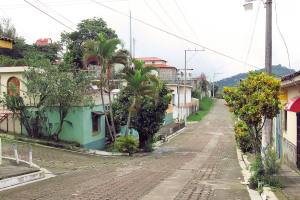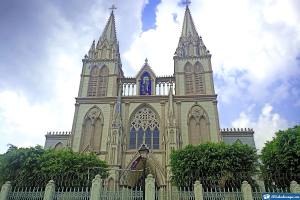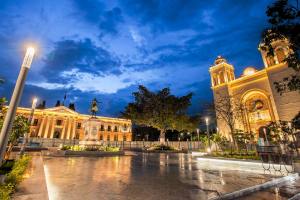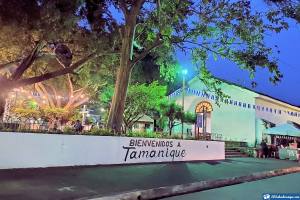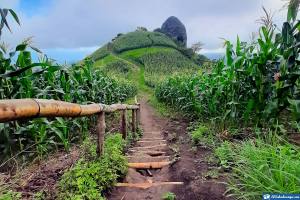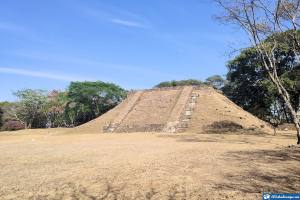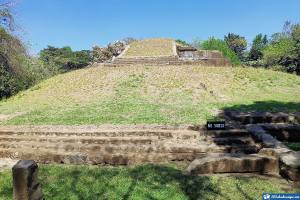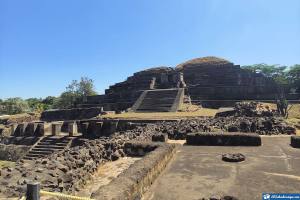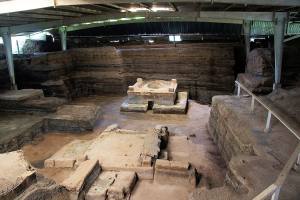On our trip through El Salvador, we cannot miss the enigmatic San Andres Archaeological Site, considered one of the largest pre-Hispanic precincts in the country, occupied by the Mayas in their period of most extraordinary splendor.
This monumental center is a “Cultural Heritage” protected by the Hague Convention of 1954.
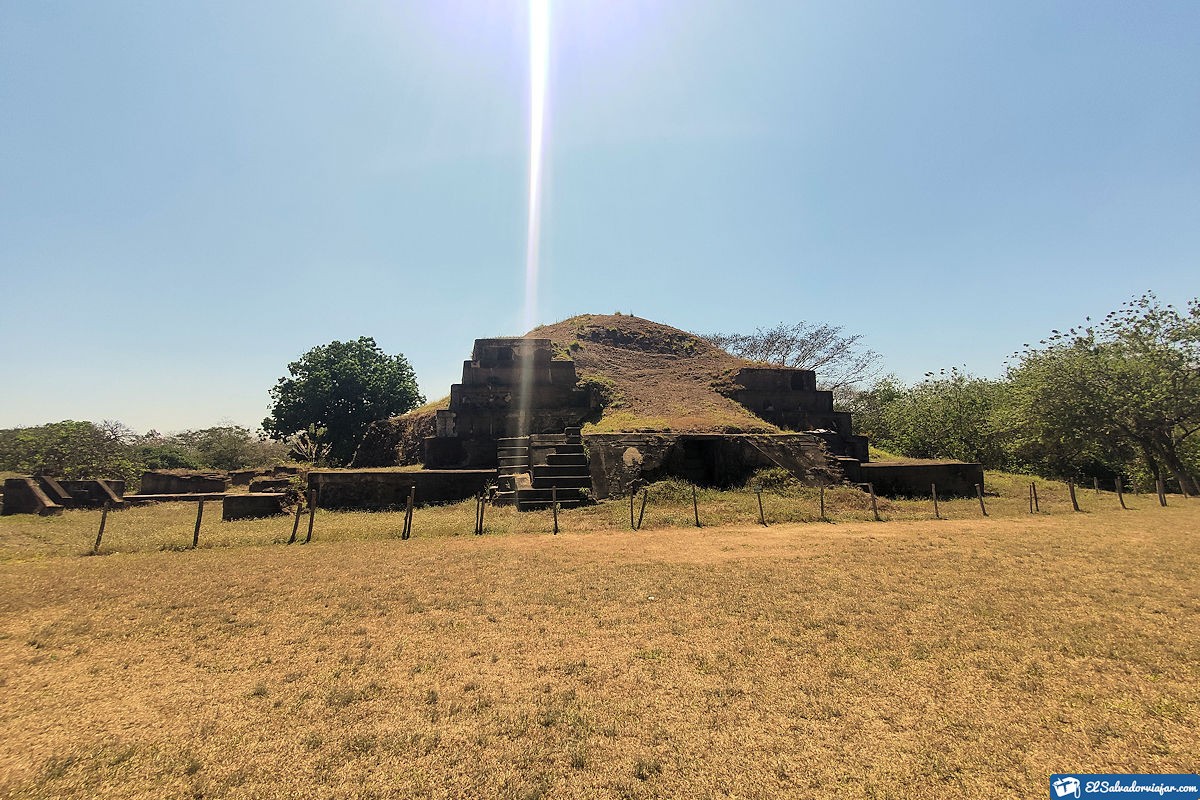
SAN ANDRÉS ARCHAEOLOGICAL SITE - Archaeological Sites of El Salvador. Photo by ElSalvadorViajar.
Let’s travel to the past and discover the charms of this exciting tourist destination, one of the most valuable archaeological discoveries of this small but captivating Central American territory.
San Andrés Archaeological Site Data
| Country: | El Salvador |
|---|---|
| Department: | La Libertad |
| Category: | Archaeological Sites |
| Route: | Mayan Route |
| Culture: | Maya |
| Periodo: | 900 b.C |
Location and history of the San Andres Archaeological Site
To visit the San Andrés Archaeological Site, we must travel to the department of La Libertad, located in the Zapotitán Valley and on the banks of the Sucio River, where this magnificent scenery is part of Salvadoran history is found.
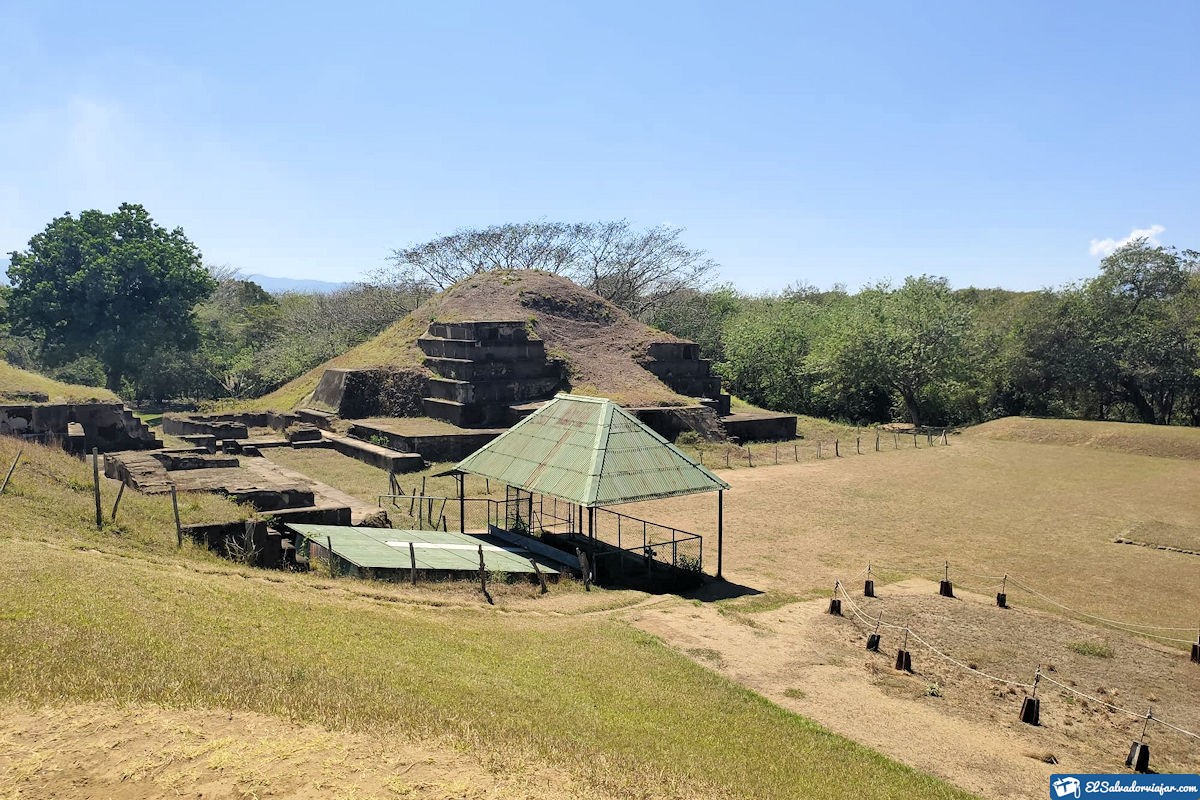
It is almost 30 minutes from the capital, San Salvador, and 3 kilometers from La Joya de Cerén, occupying approximately 20 hectares of land.
According to research, it is concluded that this was the “capital of a Mayan lordship” that controlled the human settlements of the Zapotitán Valley.
Its history begins in the year 900 B.C. when the area began to be colonized when the Mesoamerican culture was at its peak. There lived rulers, and priests, among other privileged classes, in addition to the peasants who worked the land and harvested the fruits.

They were dedicated to trading, and there were exchanges with Teotihuacan, Guatemala, and Belize, which are documented with objects and ceramics found in excavations.
History shows us that this territory was vacated around the year 250 by an eruption of the Ilopango Volcano. Repopulated it again in the V century; at the end of 1200 A.D., all signs of human life disappeared.
After the Spanish conquest, the San Andres Archaeological Site was within the limits of a colonial hacienda, hence its name, which was dedicated to the production of indigo.
During the year 1658, and due to the eruption of El Playón, the “obraje de añil,” or indigo processing facility, which we can see today, was buried but almost intact.
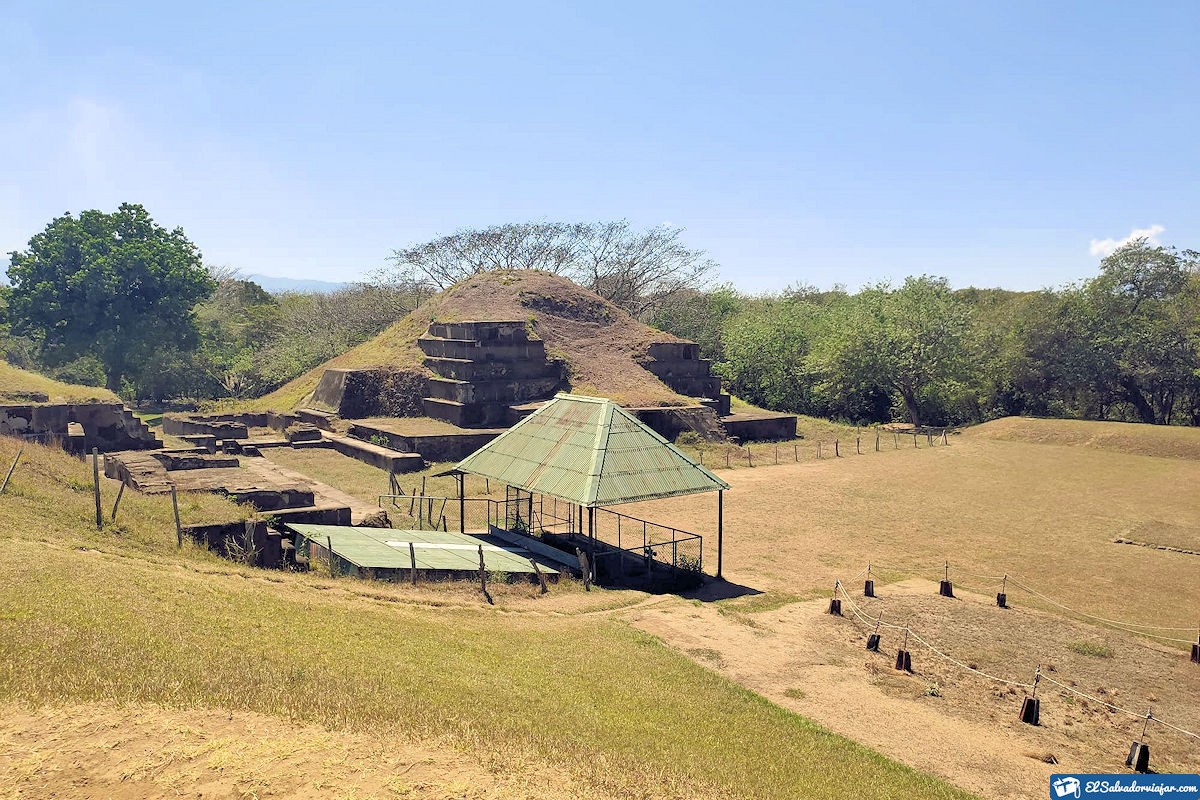
In the first decades of the 20th century, archaeological studies were initiated by experts John Dimick and Stanley H. Boggs.
What to see at the San Andrés Archaeological Site
The excavation works of the complex buildings at the San Andres Archaeological Site clearly show several areas with particular uses.
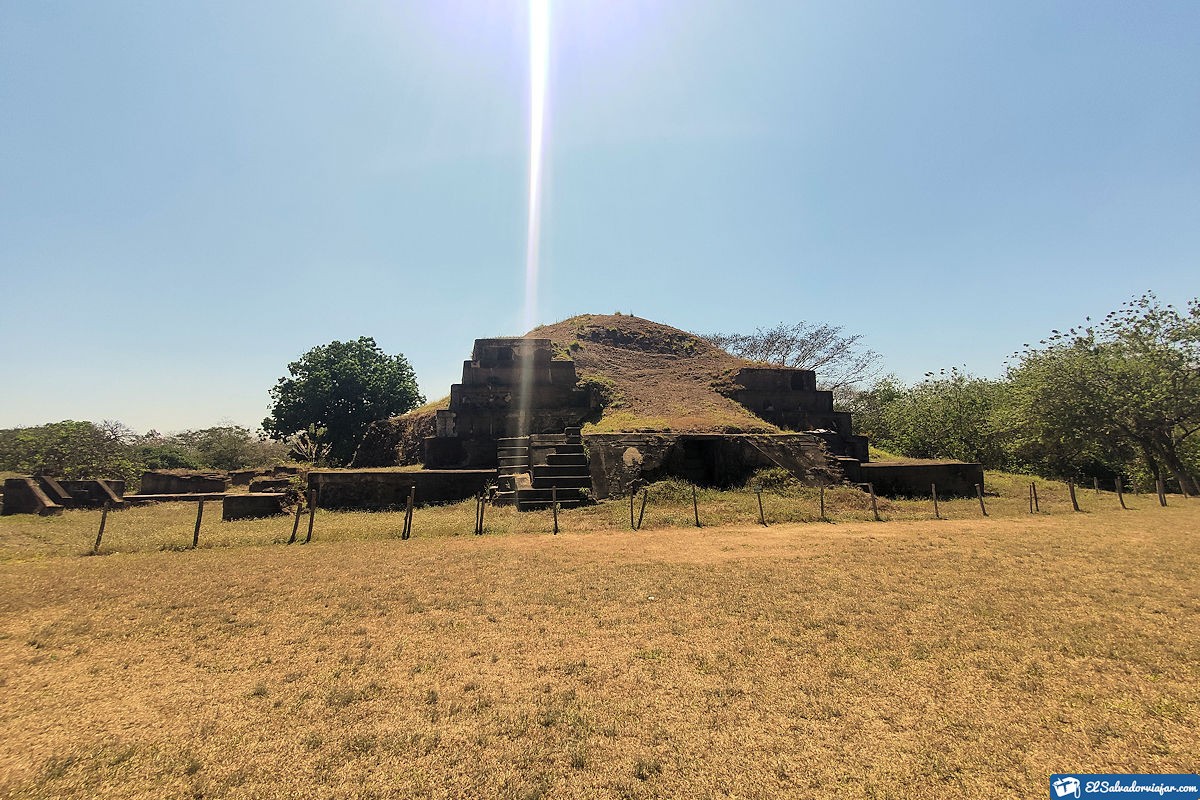
The Acropolis
It was the area reserved for the rulers, located in a high sector of the site, which spoke of the status of its residents. The “Aposentos” have been identified there, which were probably the bedrooms or halls where held received important people of the time and audiences were.
In the south and east zones, there are several pyramids of different sizes, and it is presumed that they could be the tombs of the rulers, but they have not yet been excavated.
In the so-called structure 7, exotic objects were found, such as bowls and seashells, some figures, and sahumadores for offerings; they probably came from Belize.
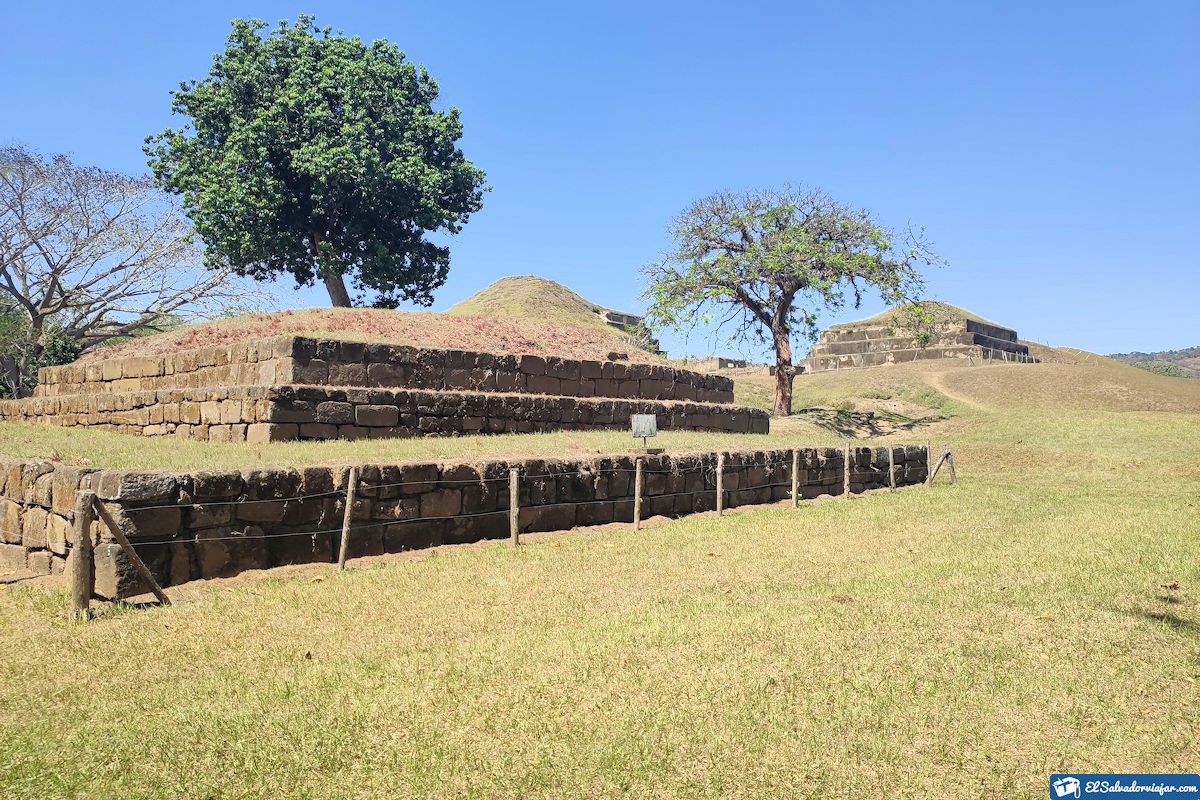
The Great Plaza
It is inferred that it could have functioned in its time as a local market, where negotiations and merchandise exchanges took place.
Main Pyramid
It is next to the Great Plaza, it is the largest and is known as The Bell. It was joined to the Acropolis by other L-shaped buildings.
The indigo works
It is a great space that shows how the ancient settlers processed the leaves of jiquilite, to obtain a blue or indigo ink, very used to give color to the fabrics.
Carlos de Sola Museum
This museum of the San Andres Archaeological Site is opened in honor of this executive of the General Directorate of Culture, Youth, and Sports.
Founded in 1986, it has three rooms. In one, it explains the zone’s geography; another talks about the investigations that have been made, and the third one with allegories to the colonial time.
How to get to San Andres Archaeological Site
Getting to the imposing San Andres Archaeological Site is easy since the route is very well indicated.

If we come by car, we take the CA-1 Highway in San Salvador, westbound, and the complex is at kilometer 31.5.
We must park in the indicated places and pay a $1.00 per parking fee.
If you use a bus, you should go to the Terminal de Occidente in San Salvador, take the units that make route 201 and tell the driver to drop you off at the ruins’ entrance.
Recommendations to visit the San Andres Archaeological Site
El Salvador, in general, is a country with a hot climate practically all year round, and the San Andres Archaeological Site is no exception, so let’s consider the following recommendations.
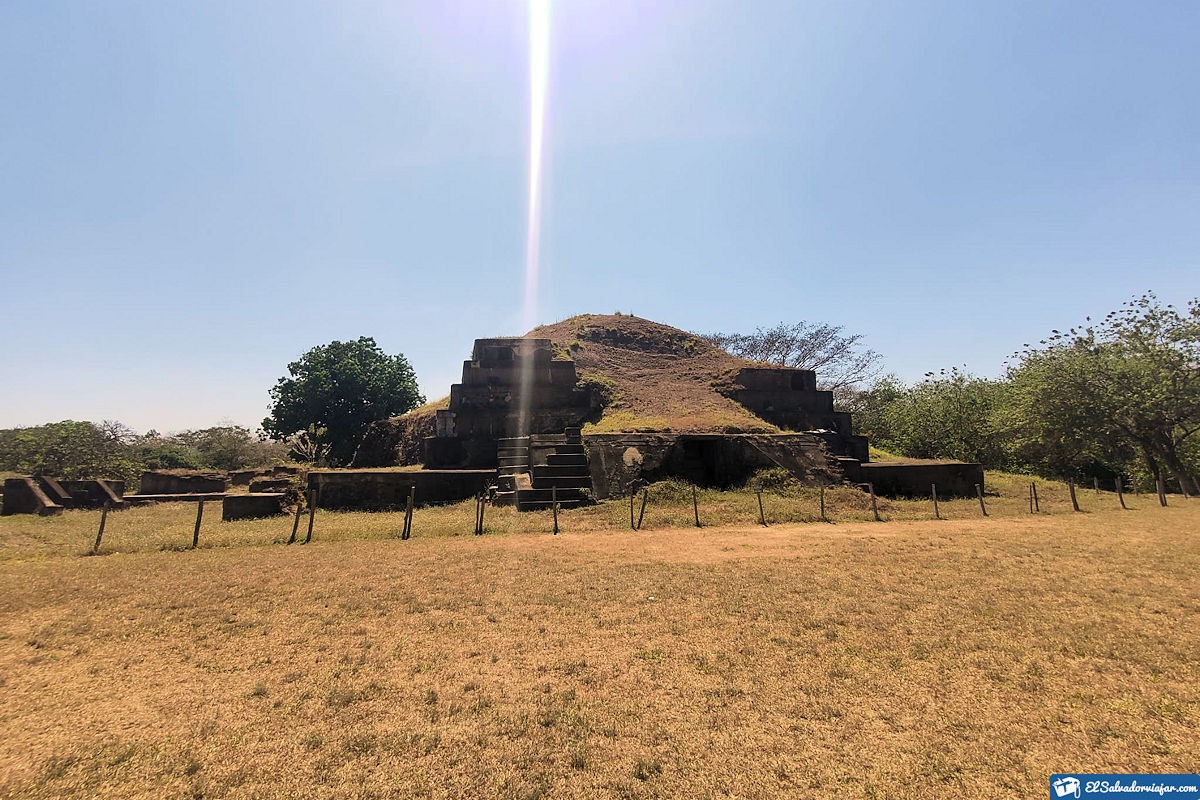
- The opening hours for visitors are from Tuesday to Sunday, between 9:00 am and 4:00 pm.
- The entrance fee is $1.00 for Salvadorans and Central Americans, while for foreign tourists, it is $5.00.
- Admission is free for national visitors over 60 years old and children under eight years old.
- It is suggested to bring enough water for hydration during your stay.
- It is advisable to wear cool clothes, comfortable shoes, hats, and sunscreen, and do not forget your camera.
- San Andres Archaeological Site has restrooms and a small cafeteria where they sell some snacks and water.
Nearby places to visit
Almost next to the San Andres Archaeological Site is Ciudad Arce, where we can walk through its streets and visit the San Pedro Waterfalls or the Termos del Rio Water Park.
We should also go to San Juan Opico, another nearby town, to admire the Laguna La Caldera or the Cueva del Partideño.
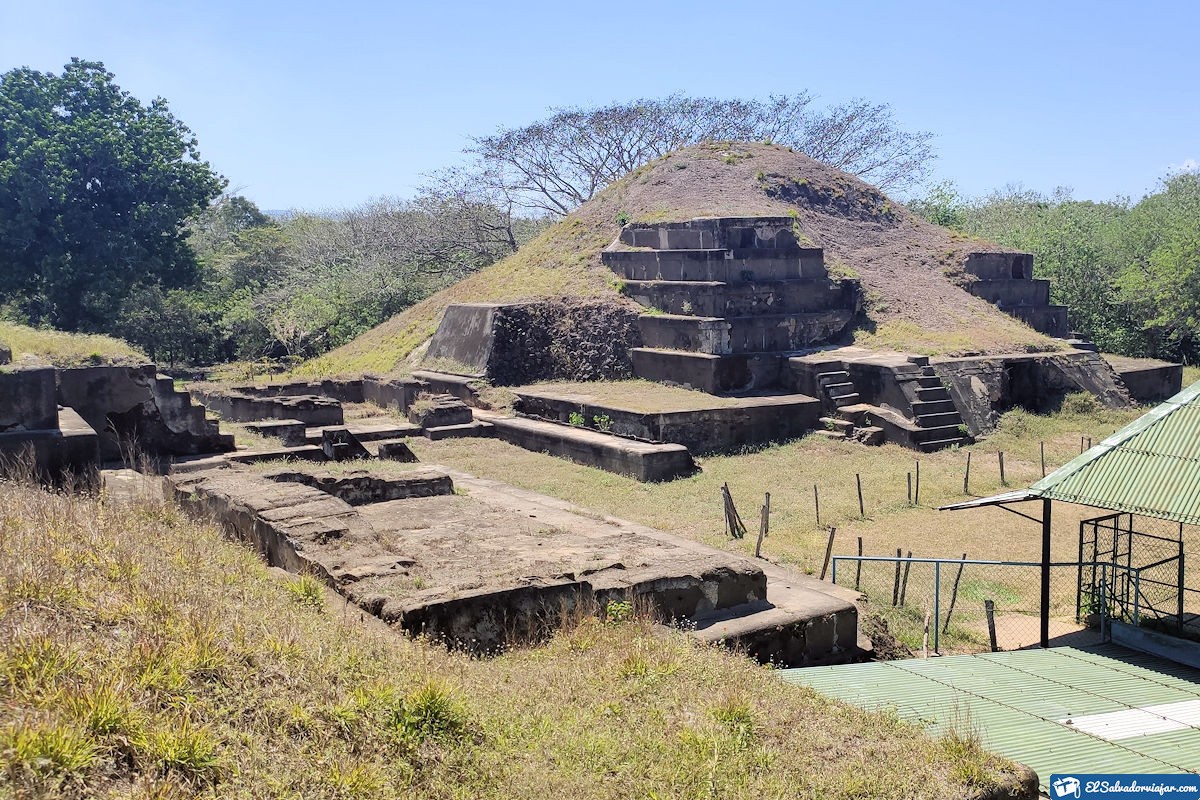
And suppose we want to continue visiting other ancient places of the Thumb of Central America. In that case, we will see the Joya de Ceren, another archaeological site with great history only 3 kilometers away.
In the same way as the Tazumal Ruins, an archaeological park that we can visit and only 45 minutes away from the San Andres Archaeological Site by the Panamerican Highway.
When visiting the San Andres Archaeological Site, we dive into the bowels of the history and culture of El Salvador, enjoying the charm of this ancient pre-Hispanic settlement. At the same time, we walk the streets and breathe the air of peace and solitude that only here can be perceived.


